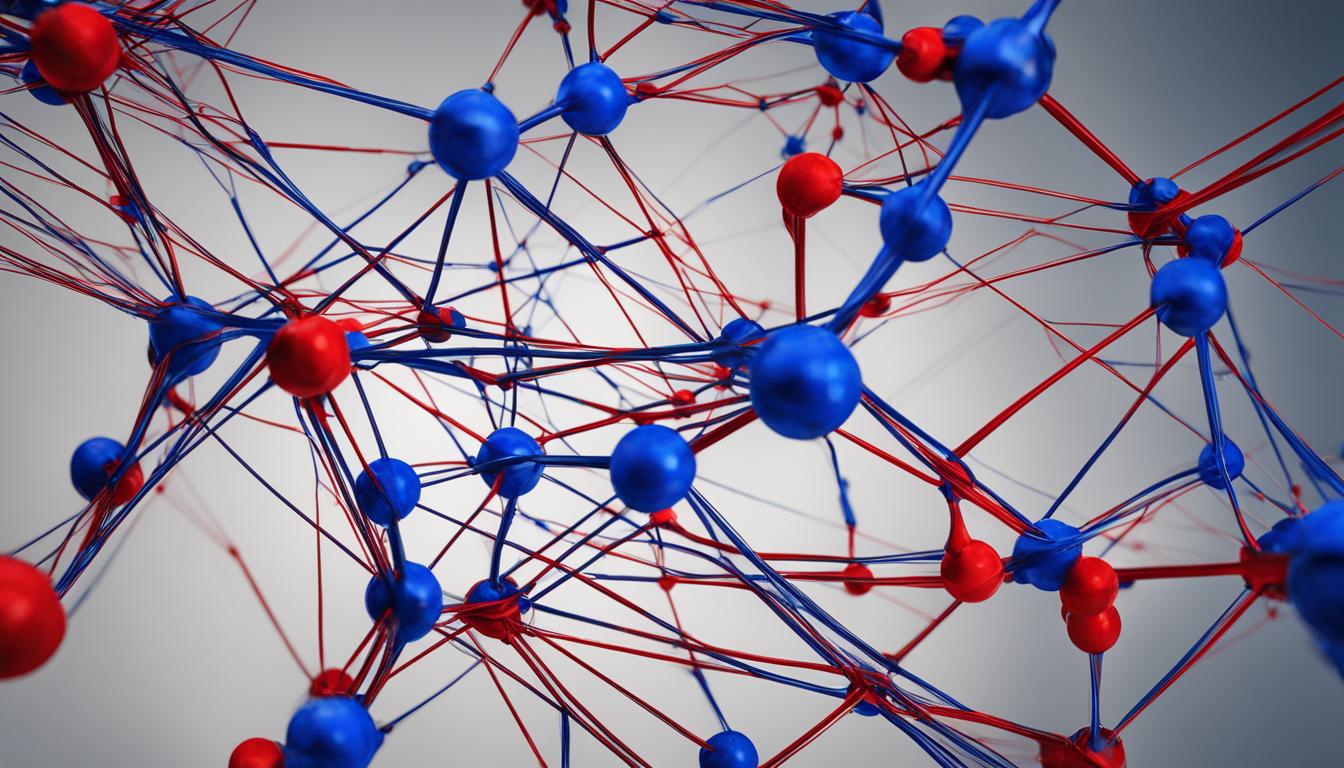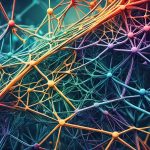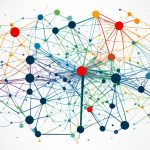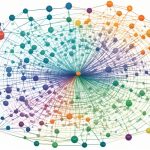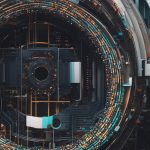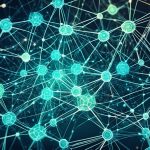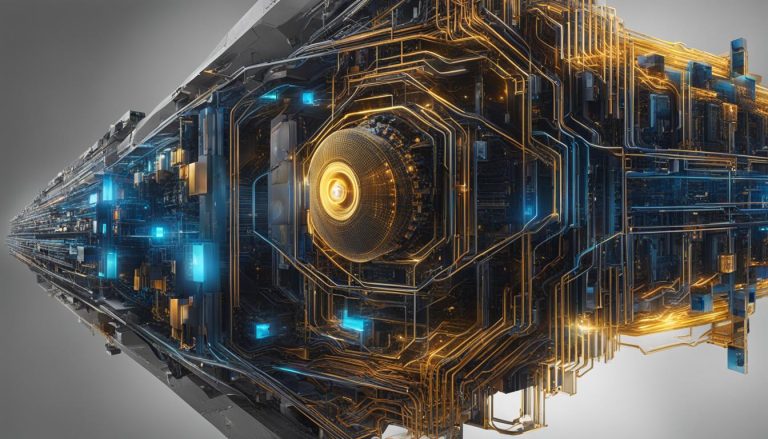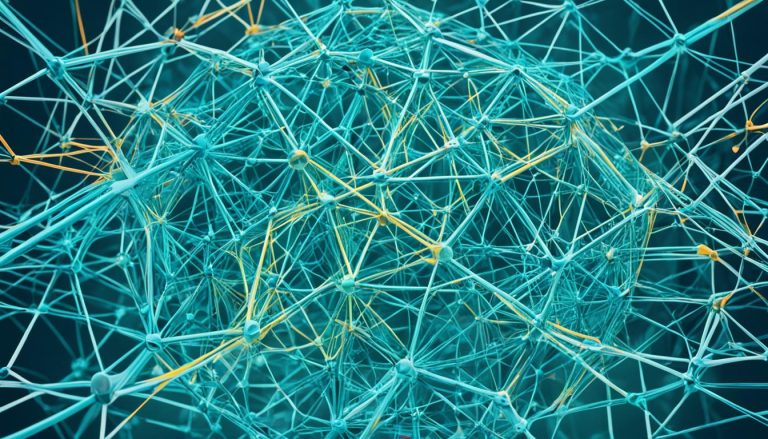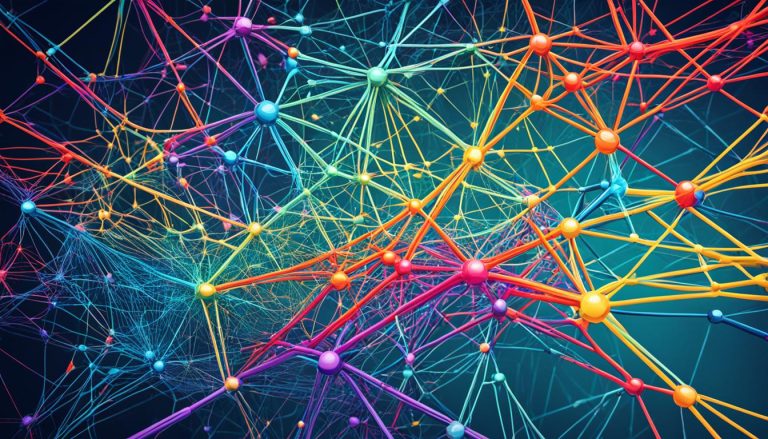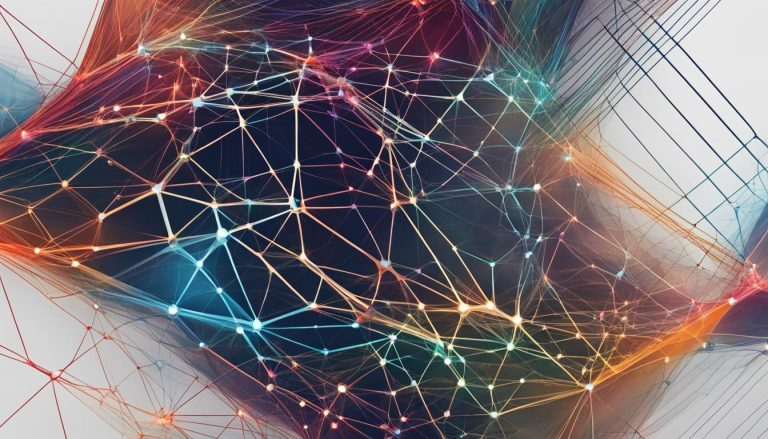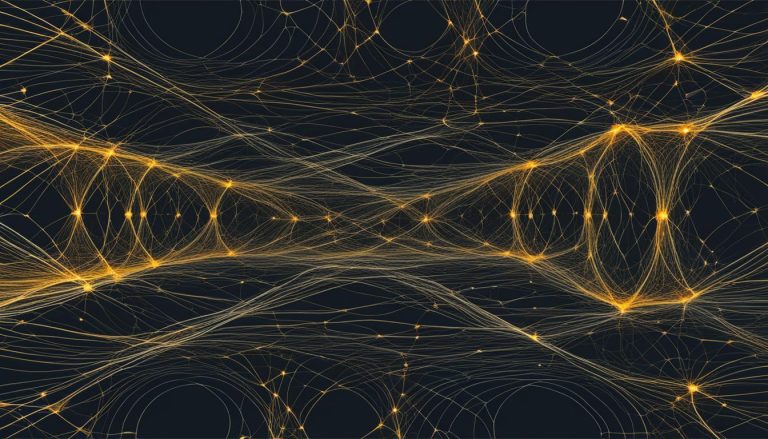Restricted Boltzmann Machines (RBMs) are the fundamental components of Deep Belief Networks (DBNs), which have revolutionized the field of artificial intelligence (AI). RBMs are two-layered generative stochastic models that have been invented by Geoffrey Hinton and play a vital role in various AI applications.
RBMs are a variant of Boltzmann machines, with a key distinction being that their neurons form a bipartite graph. This means that there are no connections between nodes within a group, whether visible or hidden. RBMs excel in tasks such as dimensionality reduction, classification, regression, collaborative filtering, feature learning, and topic modeling.
DBNs, built using stacked RBMs, are powerful generative models that can be utilized in both unsupervised and supervised settings. In unsupervised mode, DBNs perform feature learning and extraction, whereas in supervised settings, DBNs can be fine-tuned on labeled datasets for various applications such as image generation, image classification, video recognition, motion capture, and natural language understanding.
In this article, we will delve into the workings of RBMs, explore their contribution to the field of deep learning, and understand their role in the construction of Deep Belief Networks.
What is a Restricted Boltzmann Machine?
A Restricted Boltzmann Machine (RBM) is a shallow, two-layer neural network that serves as a building block for deep belief networks. RBMs have a visible layer and a hidden layer, and they learn to reconstruct data in an unsupervised fashion. RBMs are stochastic building blocks that use the weights associated with each neuron to perform alternating Gibbs sampling, updating the units in a layer given the current states of the units in the other layer. RBMs are used to approximate the original data through a reconstruction phase and optimize their weights based on the error between the reconstructions and the original input.
A key characteristic of RBMs is that they are generative models, meaning they can learn to model the underlying probability distribution of the input data. This allows RBMs to generate new samples that resemble the original data distribution. RBMs are considered a type of deep learning algorithm due to their ability to capture complex patterns and relationships in the data.
RBMs serve as powerful tools for feature extraction, dimensionality reduction, and data representation learning. They have found applications in various domains, including image recognition, natural language processing, recommendation systems, and anomaly detection.
The learning process of an RBM involves iteratively updating the weights and biases to minimize the reconstruction error. This is typically done using optimization techniques such as contrastive divergence or persistent contrastive divergence. By iteratively fine-tuning the RBM, it can learn to capture the important features and patterns in the data, enabling more effective analysis and modeling.
The Structure of a Restricted Boltzmann Machine
RBMs consist of two layers: a visible layer and a hidden layer. The visible layer represents the input data, while the hidden layer represents learned features or representations derived from the input. Each neuron in the visible layer is connected to all neurons in the hidden layer, but there are no direct connections between neurons within the same layer.
The interaction between the visible and hidden layers is governed by weights and biases. The weights determine the strength of the connections between neurons, while the biases control the overall activation level of each neuron. These parameters are updated during the learning process to optimize the RBM’s performance.
| Restricted Boltzmann Machine |
|---|
| Visible Layer |
| Hidden Layer |
| Weights |
| Biases |
| Reconstruction |
The RBM can be represented as a bipartite graph, with visible and hidden neurons forming separate groups. This structural constraint ensures that RBMs can effectively capture dependencies and correlations between the visible and hidden variables, allowing for efficient feature learning and representation.
In summary, RBMs are powerful generative models and deep learning algorithms that can reconstruct data and learn to capture important features and patterns. They are widely used in various applications and serve as fundamental building blocks for deep belief networks.
How Does a Restricted Boltzmann Machine Work?
A Restricted Boltzmann Machine (RBM) operates through a forward pass and a backward pass, utilizing Gibbs sampling and contrastive divergence to update its unit states during the learning process. The RBM’s weights are optimized by minimizing an energy function.
In the forward pass, data is passed from the visible layer to the hidden layer. The input data is first multiplied by weights and then added to biases. The resulting values are then passed through an activation function, generating the output for the hidden layer.
“The forward pass in an RBM involves propagating the input data through the visible layer and transforming it to the hidden layer’s output by applying weights, biases, and an activation function.”
Conversely, in the backward pass, the activations of the hidden layer serve as input. Reconstructions of the original data are generated by multiplying the hidden layer activations with the same weights used in the forward pass. These reconstructions are then added to the biases of the visible layer.
“During the backward pass, the hidden layer activations are used to reconstruct the original data by multiplying them with the same weights used in the forward pass and adding them to the visible layer biases.”
Gibbs sampling and contrastive divergence play pivotal roles in updating the states of the RBM’s units during the learning process. Gibbs sampling involves iteratively updating the states of the visible and hidden units based on the current states of the other layer’s units. Contrastive divergence, on the other hand, is a learning algorithm that approximates the gradient of the RBM’s weights based on the difference between the data and the reconstructions.
The RBM’s weights are optimized by minimizing an energy function, which is the difference between the observed data’s energy and the energy of the reconstructed data.
RBM Workflow
| Step | Description |
|---|---|
| Forward pass | Input data is propagated from the visible layer to the hidden layer, generating the hidden layer’s output with weights, biases, and an activation function. |
| Backward pass | Hidden layer activations are used to reconstruct the original data by multiplying them with the same weights used in the forward pass and adding them to the visible layer biases. |
| Gibbs sampling | Iterative updating of the visible and hidden unit states based on the current states of the other layer’s units. |
| Contrastive divergence | Learning algorithm that approximates the gradient of the RBM’s weights based on the difference between the data and the reconstructions. |
| Energy function | The RBM’s weights are optimized by minimizing the energy function, which compares the observed data’s energy with the energy of the reconstructed data. |
The Role of RBMs in Deep Belief Networks
Restricted Boltzmann Machines (RBMs) are not only valuable building blocks in deep learning algorithms but also play a crucial role in the creation of deep belief networks (DBNs). DBNs are powerful generative models that utilize a deep architecture consisting of multiple stacked RBMs. These networks can be utilized in both unsupervised and supervised settings, offering a wide range of applications.
In unsupervised settings, DBNs excel at feature learning and extraction. They achieve this by implementing a technique known as layer-by-layer pre-training. This involves training the RBMs forming the DBN one layer at a time, with each RBM learning to extract increasingly complex features from the data. This unsupervised approach is particularly favorable when working with unlabeled datasets, as it allows DBNs to capture the underlying distribution of the data and extract meaningful representations.
Within supervised settings, DBNs can be fine-tuned on labeled datasets. This fine-tuning process allows for further optimization of the DBN’s performance on specific tasks such as image generation, image classification, video recognition, motion capture, and natural language understanding. By leveraging the initial unsupervised pre-training, DBNs can adapt the learned feature representations to the labeled data, enhancing their ability to make accurate predictions and classifications.
One of the key advantages of RBMs in DBNs is their ability to capture dependencies and correlations among the data’s visible variables. RBMs learn hidden representations of the data, mapping complex and high-dimensional input data onto a lower-dimensional latent space. This latent space captures the essential features and relationships within the data, allowing for efficient and effective processing in subsequent layers of the DBN.
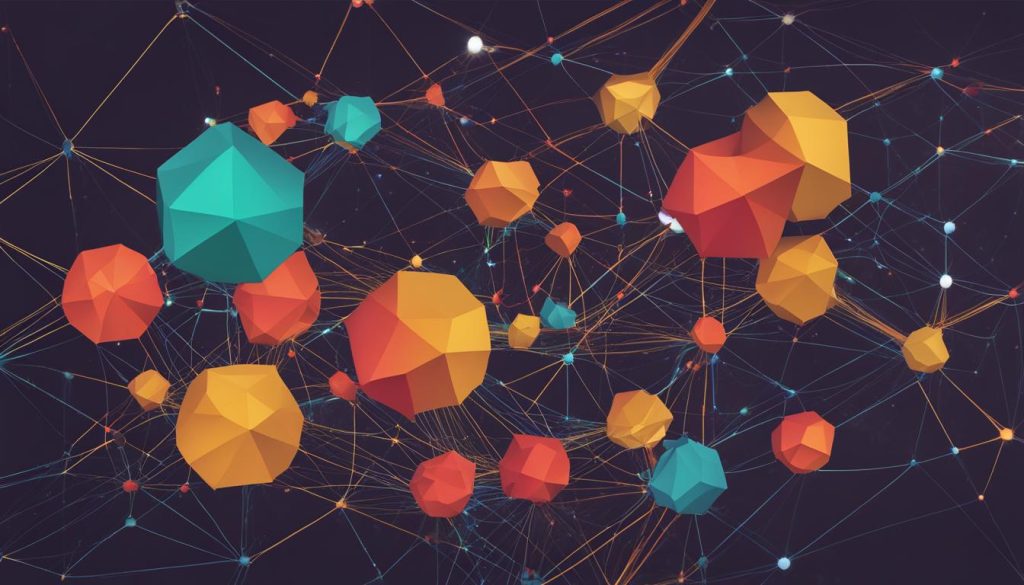
By incorporating RBMs into the DBN architecture, deep belief networks gain the ability to model complex generative processes. The RBMs act as powerful generative models, learning to capture the underlying probability distribution of the data. This enables the DBN to generate new samples that closely resemble the original data, facilitating tasks such as image generation and language modeling.
The integration of RBMs into deep belief networks demonstrates their versatility as both generative and discriminative models. Their contribution to unsupervised pre-training and subsequent fine-tuning in supervised settings allows DBNs to leverage the best of both worlds, capturing intricate data dependencies while harnessing the power of labeled information. RBMs, in conjunction with deep belief networks, continue to drive advancements in various domains, including computer vision, natural language processing, and beyond.
Difference Between RBMs and Deep Boltzmann Machines
When exploring generative models, it is essential to understand the difference between Restricted Boltzmann Machines (RBMs) and Deep Boltzmann Machines (DBMs). While both RBMs and DBMs are generative models commonly used in deep learning, they differ in their architecture and connectivity.
RBMs, as discussed in the previous section, are two-layered neural networks consisting of a visible layer and a hidden layer. The connections in RBMs are limited to the visible and hidden layers, creating a bipartite graph. RBMs are bidirectional, meaning they can reconstruct data in an unsupervised manner, optimizing their weights based on the error between the reconstructions and the original input.
On the other hand, DBMs are three-layered generative models that extend the concept of RBMs. In DBMs, unlike RBMs, there are undirected connections between all layers. These undirected connections allow for more complex interactions and capture deeper dependencies within the data. The architecture of DBMs enables them to model more intricate relationships in the data but makes the training process more challenging compared to RBMs.
Deep Boltzmann Machines (DBMs) have undirected connections between all layers, allowing for more complex interactions and capturing deeper dependencies within the data.
When it comes to training effectiveness, DBMs have been found to perform better than Deep Belief Networks (DBNs), which use RBMs as their building blocks. The use of undirected connections between layers in DBMs allows them to achieve lower loss compared to DBNs.
However, one drawback of DBMs is the challenge of generating samples from the model. Due to their complex architecture and interactions, DBMs can be harder to sample from when compared to RBMs.
Despite this, RBMs continue to be an integral part of building DBMs. RBMs are often used as the building blocks in the construction of DBMs, forming the layers within the DBM architecture.
Comparison Table: RBMs vs. DBMs
| Restricted Boltzmann Machines (RBMs) | Deep Boltzmann Machines (DBMs) |
|---|---|
| Two-layered neural networks | Three-layered generative models |
| Bidirectional connections between visible and hidden layers | Undirected connections between all layers |
| Used as building blocks in Deep Belief Networks | Leverages RBMs as layers in their architecture |
| Reconstruction-based unsupervised learning | More complex training process |
| Lower loss | Harder to generate samples from |
In summary, RBMs and DBMs are both valuable generative models used in deep learning. RBMs act as the foundational building blocks in the construction of DBMs, which leverage the undirected connections between layers to model more complex data dependencies. While DBMs achieve lower loss, they also come with the drawback of being harder to generate samples from. Both RBMs and DBMs contribute to advancing the capabilities of generative models in the field of deep learning.
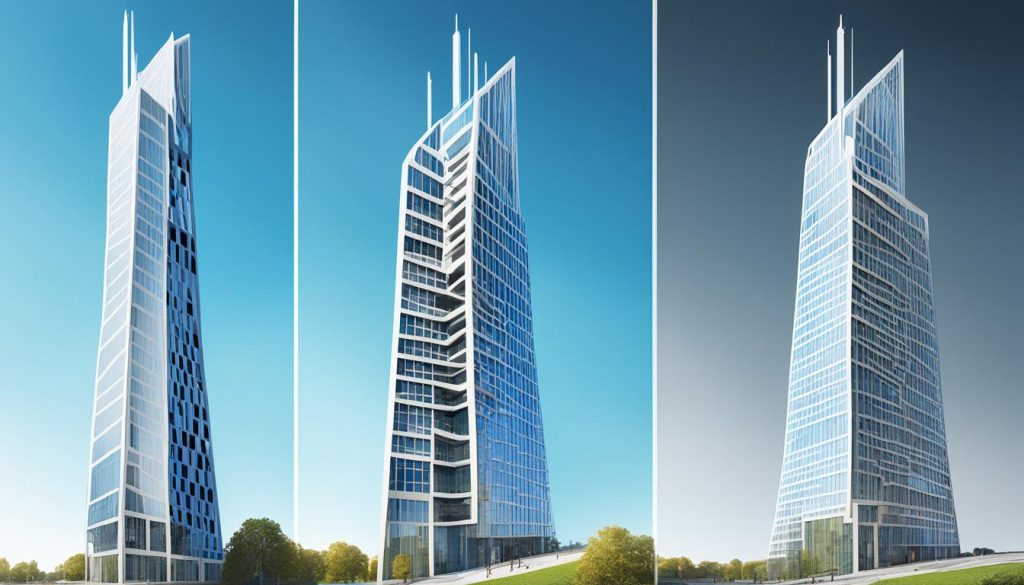
Code Implementation and Fine-Tuning of RBMs
In order to implement Restricted Boltzmann Machines (RBMs) in your projects, there are various libraries and frameworks available that provide the necessary tools for code implementation. One such library is the Neural Network Libraries, which offers a comprehensive set of functions and utilities for building and training RBMs.
The Neural Network Libraries is a powerful toolkit that simplifies the process of developing neural networks and deep learning models. It offers a user-friendly interface and a wide range of functions for creating RBMs, initializing their parameters, and specifying the learning algorithms.
Code Example:
Here is an example of code implementation using the Neural Network Libraries:
- Import the necessary modules:
import nnabla as nn import nnabla.functions as F import nnabla.parametric_functions as PF
- Create an RBM model:
with nn.parameter_scope('rbm'): v = nn.Variable((batch_size, num_visible)) h = PF.affine(v, n_outmaps=num_hidden) h = F.sigmoid(h)
- Define the loss function and optimizer:
loss = F.mean_squared_error(v, h) optimizer = nn.Adam() optimizer.set_parameters(nn.get_parameters())
- Train the RBM model:
for i in range(num_epochs): optimizer.zero_grads() loss.forward() loss.backward() optimizer.update()
- Perform fine-tuning:
for i in range(num_iterations): # Update RBM weights using CD-k algorithm v_sync.grad.zero() h_sync.grad.zero() CD_k(v_sync, h_sync, k) v_sync.grad.apply(optimizer) h_sync.grad.apply(optimizer)
Fine-tuning of RBMs involves an iterative process of adjusting the weights based on the error between the reconstructions and the original input. The goal of fine-tuning is to optimize the RBM’s weights to approximate the original data and capture the underlying patterns and correlations. This process is crucial for enhancing the performance and accuracy of RBM models.
By leveraging libraries like the Neural Network Libraries, developers can streamline the code implementation of RBMs and fine-tuning procedures. These tools provide a seamless workflow and facilitate the efficient development of RBM models for various applications in deep learning.
To further support your understanding of code implementation and fine-tuning of RBMs, the following table provides a comparison of different libraries and frameworks that can be used:
| Library/Framework | Features | Advantages | Disadvantages |
|---|---|---|---|
| Neural Network Libraries | Comprehensive functions and utilities for RBM implementation | – User-friendly interface – Efficient training algorithms – Seamless integration with other deep learning models | – Limited documentation for beginners |
| TensorFlow | Extensive support for RBMs and deep learning | – Wide community support – Rich set of pre-trained models – Scalability for large datasets | – Complex architecture and syntax – Steep learning curve for beginners |
| PyTorch | Elegant and intuitive RBM implementation | – Dynamic computational graph – Easy debugging and visualization – Excellent integration with Python ecosystem | – Limited support for distributed computing |
By utilizing these libraries and frameworks, researchers and developers can accelerate their RBM projects and achieve efficient code implementation and fine-tuning processes.
Conclusion
Restricted Boltzmann Machines (RBMs) are an essential component of deep learning, particularly in the field of deep belief networks (DBNs). RBMs are powerful generative models that can effectively learn a probability distribution over a given set of input features. Their versatility allows them to be used in a wide range of tasks, including dimensionality reduction, classification, regression, collaborative filtering, feature learning, and topic modeling.
RBMs play a vital role in DBNs, which are highly versatile generative models capable of operating in both unsupervised and supervised settings. DBNs can be applied to various tasks, such as image generation, image classification, video recognition, motion capture, and natural language understanding. By capturing dependencies and correlations among the data’s visible variables, RBMs provide a strong foundation for the success of DBNs.
In the rapidly evolving field of deep learning, RBMs have proven to be a fundamental building block. Their ability to learn complex distributions of input features makes them invaluable in solving challenging problems. As deep belief networks continue to push the boundaries of generative modeling and deep learning, RBMs remain a crucial tool for researchers and practitioners alike.
FAQ
What is a Restricted Boltzmann Machine (RBM)?
A Restricted Boltzmann Machine (RBM) is a shallow, two-layer neural network that serves as a building block for deep belief networks. RBMs are stochastic generative models that can learn a probability distribution over a set of input features. They have been used for various tasks such as dimensionality reduction, classification, regression, collaborative filtering, feature learning, and topic modeling.
How does a Restricted Boltzmann Machine (RBM) work?
In the forward pass of an RBM, the input data is propagated through the visible layer to the hidden layer, where it is multiplied by weights, added to biases, and passed through an activation function to produce the hidden layer’s output. In the backward pass, the activations of the hidden layer serve as input, and reconstructions of the original data are generated by multiplying the hidden layer activations by the same weights used in the forward pass and adding them to the visible layer biases. Gibbs sampling and contrastive divergence are used to update the states of the units in an RBM during the learning process. The RBM’s weights are optimized through the minimization of an energy function.
What is the role of Restricted Boltzmann Machines (RBMs) in Deep Belief Networks (DBNs)?
RBMs play a crucial role in Deep Belief Networks (DBNs), which are powerful generative models that can be used in unsupervised and supervised settings for tasks such as image generation, image classification, video recognition, motion capture, and natural language understanding. RBMs provide the foundation for capturing dependencies and correlations among the data’s visible variables in DBNs.
What is the difference between Restricted Boltzmann Machines (RBMs) and Deep Boltzmann Machines (DBMs)?
RBMs are two-layered generative models with connections only between the visible and hidden layers and are bidirectional. On the other hand, DBMs are three-layered generative models that have undirected connections between all layers. While RBMs are often used as building blocks in the construction of DBMs, DBMs have been found to train better than DBNs but can be harder to generate samples from.
How can I implement and fine-tune Restricted Boltzmann Machines (RBMs)?
There are various libraries and frameworks available for code implementation of RBMs, such as Neural Network Libraries. These libraries provide the necessary tools for building and training RBMs. Fine-tuning of RBMs involves iteratively adjusting the weights based on the error between the reconstructions and the original input. The fine-tuning process aims to optimize the RBM’s weights to approximate the original data and capture the underlying patterns and correlations.

